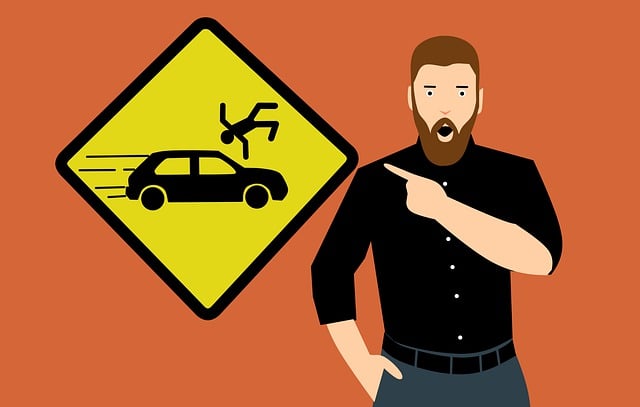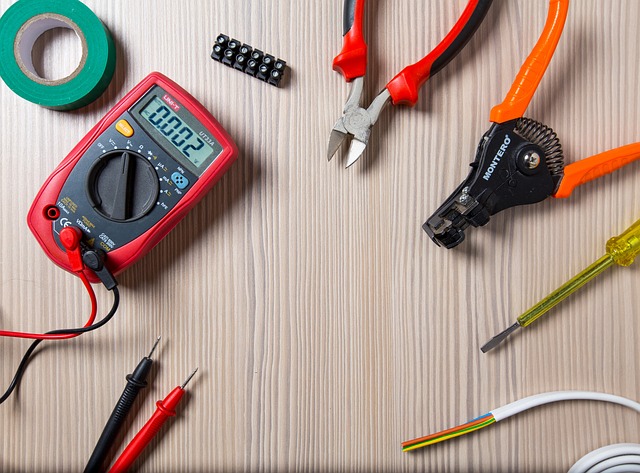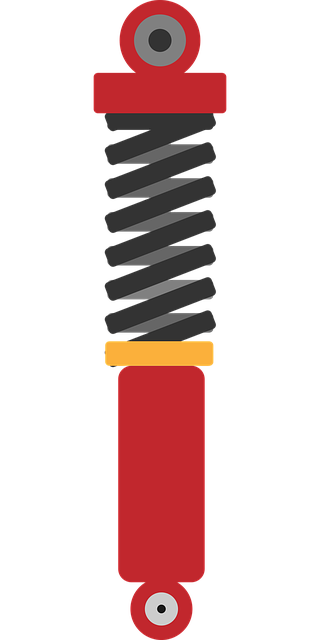Collision Damage Repair: Key Steps from Assessment to Final Inspection
Collision damage repair begins with a detailed assessment using digital imaging and software to iden…….
Collision damage repair is a critical aspect of the automotive industry, focusing on restoring vehicles to their pre-accident condition after a collision. It involves a meticulous process of assessing, repairing, and refinishing damaged automobiles, ensuring they are safe for road usage and meeting aesthetic standards. This article aims to provide an in-depth exploration of collision damage repair, its global impact, economic implications, technological innovations, regulatory frameworks, challenges, and future prospects. By delving into these aspects, readers will gain a comprehensive understanding of the vital role this industry plays in the automotive sector.
Definition: Collision damage repair, often referred to as auto body repair, is a specialized process that addresses structural and cosmetic issues on vehicles resulting from collisions or accidents. It involves a series of intricate steps to ensure the vehicle’s safety, functionality, and visual appeal are restored.
Core Components:
Assessment and Damage Analysis: The initial stage includes a thorough inspection of the vehicle to identify all damage, ranging from bent panels to shattered glass and internal component damage. Advanced diagnostics tools assist in this process, providing accurate data for repair planning.
Safety Inspection: Ensuring the vehicle meets safety standards is paramount. Repairs must adhere to regulations related to structural integrity, frame alignment, and crash-test requirements.
Panels and Parts Replacement: Damaged body panels are either repaired or replaced with new ones. This step involves skilled technicians using specialized equipment to straighten and weld panels back into place or replace them entirely.
Painting and Refinishing: The final stage focuses on restoring the vehicle’s exterior appearance. Skilled painters use precise techniques to match the original factory paint, ensuring a seamless finish.
Historical Context: The concept of collision damage repair has evolved significantly over the years, driven by advancements in automotive technology and safety standards. Initially, repairs were often rudimentary, focusing on replacing basic parts. However, with the introduction of advanced materials, computer-aided design (CAD), and precision tools, modern collision damage repair has become a highly skilled and intricate process.
Significance: Collision damage repair plays a crucial role in several ways:
Safety: Restoring vehicles to their pre-accident condition ensures they are safe for road usage, reducing the risk of further accidents and promoting road safety.
Environmental Protection: Properly repairing damaged vehicles helps extend their lifespan, reducing the need for new car production and minimizing environmental impact.
Economic Viability: The industry contributes significantly to the economy by supporting employment, generating revenue, and facilitating the resale value of vehicles.
Collision damage repair is a global phenomenon, with varying degrees of development across regions, influenced by factors such as economic conditions, infrastructure, and cultural attitudes towards vehicle ownership.
International Influence: The industry’s reach extends worldwide, with highly developed markets like North America, Western Europe, and Japan setting benchmarks for quality and innovation. These regions have established stringent safety standards and robust insurance systems that drive the need for advanced collision damage repair services.
Regional Variations:
North America: Known for its stringent safety regulations and a culture of vehicle ownership, the United States and Canada lead in terms of investment in collision damage repair infrastructure and technological advancements.
Europe: With a high density of vehicles per capita and a focus on environmental sustainability, European countries have developed sophisticated recycling practices and eco-friendly repair methods.
Asia-Pacific: Rapidly growing economies like China and India are witnessing a surge in vehicle ownership, leading to increased demand for collision damage repair services. These regions are also adopting advanced technologies, such as robotic welding and computer-aided design, to enhance efficiency.
Trends Shaping the Industry:
Digitalization: The integration of digital technology is revolutionizing collision damage repair. CAD systems enable precise measurements and design modifications, while computer-aided painting ensures consistent color matching.
Sustainability: Environmental concerns are driving the adoption of eco-friendly practices, including using recycled materials, water-based paints, and energy-efficient equipment.
Mobile Repair Services: The rise of mobile repair units offers convenience by bringing collision damage repair services directly to customers’ locations, reducing downtime for vehicle owners.
The economic landscape of collision damage repair is dynamic, influenced by market forces, insurance practices, and regulatory frameworks.
Market Dynamics:
Demand and Supply: The industry’s demand fluctuates with factors such as vehicle accident rates, economic conditions, and consumer behavior. In regions with higher vehicle ownership and strict safety regulations, the demand for collision damage repair services is consistently high.
Competition: Competition among repair shops and bodyshops varies across locations, influenced by factors like labor costs, technological capabilities, and customer loyalty.
Investment Patterns:
Infrastructure Development: Collision repair centers invest in advanced equipment, training programs, and facility upgrades to meet growing demand and maintain quality standards.
Technology Adoption: The industry’s focus on embracing new technologies, such as robotic systems and advanced paint technology, drives significant investment in research and development.
Role in Economic Systems:
Employment: Collision damage repair provides substantial employment opportunities, including skilled technicians, painters, and support staff, contributing to local economies.
Revenue Generation: The industry generates considerable revenue through direct repairs, parts sales, and associated services, making it a vital component of the automotive service sector.
Resale Value: Proper collision damage repair can enhance the resale value of vehicles, benefiting both car owners and dealers.
Technological innovations have been instrumental in transforming collision damage repair into a more efficient, precise, and environmentally friendly process.
Key Advancements:
Robotic Welding: Robotic systems are revolutionizing panel straightening and welding processes, offering increased precision, reduced cycle times, and improved safety for technicians.
Computer-Aided Design (CAD): CAD software enables detailed digital modeling of vehicles, facilitating accurate damage assessment, design repairs, and ensure precise fitment of replacement parts.
Water-Based Paints: Eco-friendly water-based paints have gained popularity due to their reduced environmental impact and fast drying times, contributing to more efficient painting processes.
Advanced Testing and Simulation: Computer simulations and advanced testing equipment allow for virtual crash testing, helping repair shops anticipate potential issues and optimize repair strategies.
Impact on the Industry:
Enhanced Efficiency: Technological advancements have improved productivity by streamlining workflows, reducing labor costs, and minimizing errors.
Consistency and Quality: Precise technologies ensure consistent results in repairs, enhancing vehicle quality and customer satisfaction.
Sustainability: Eco-friendly technologies contribute to the industry’s shift towards sustainability, promoting environmental responsibility.
Future Potential:
Artificial Intelligence (AI): AI applications promise to revolutionize collision damage repair through automated diagnostic systems, predictive maintenance, and optimized repair strategies.
Augmented Reality (AR): AR technology can guide technicians during complex repairs, providing real-time visual instructions and enhancing precision.
3D Printing: 3D printing has the potential to revolutionize parts replacement by enabling on-demand manufacturing of custom-fit components, reducing wait times and costs.
The collision damage repair industry operates within a framework of policies and regulations that shape its practices, standards, and development.
Key Policies and Regulations:
Safety Standards: Government bodies establish safety standards for vehicle construction and repair, ensuring structural integrity and crashworthiness. These standards guide the industry’s practices and influence repair procedures.
Insurance Regulations: Insurance policies play a pivotal role in collision damage repair, with regulations governing claims processing, repair shop selection, and pricing. These policies impact the industry by influencing customer behavior and repair shop strategies.
Environmental Compliance: Environmental regulations require repair shops to adhere to specific practices, such as proper disposal of waste and use of eco-friendly materials, shaping their operational decisions.
Influence on Industry Development:
Standardization: Policies and regulations promote standardization in repair procedures, ensuring consistency in quality and safety across the industry.
Customer Protection: Regulatory frameworks protect consumers by setting guidelines for ethical practices, transparent pricing, and ensuring repair shop accountability.
Innovation Incentives: Some governments offer incentives or subsidies to encourage the adoption of advanced technologies and eco-friendly practices within the collision damage repair sector.
Despite its significant contributions, the collision damage repair industry faces several challenges and criticisms that require strategic solutions.
Main Challenges:
Skill Shortage: The industry struggles with a shortage of skilled technicians due to high demand, limited training programs, and the perception of collision repair as a low-skill job.
Parts Availability: Obtaining authentic, high-quality parts can be challenging, particularly for vintage or imported vehicles, impacting repair outcomes and customer satisfaction.
Environmental Concerns: While efforts are being made to adopt eco-friendly practices, the industry still faces criticism for its environmental impact, especially in terms of waste generation and resource consumption.
Criticisms and Proposed Solutions:
Quality Variability: Critics often point to inconsistent repair quality across shops, suggesting standardized training programs and certification systems to ensure consistent service.
Transparency in Pricing: Lack of transparency in pricing structures can lead to customer dissatisfaction. Implementing industry-wide standards for pricing and billing practices can address this issue.
Ethical Business Practices: Some collision repair shops engage in unethical practices, such as unnecessary repairs or overcharging. Stricter regulations and consumer education can help mitigate these concerns.
Strategic Considerations:
Training and Education: Investing in comprehensive training programs and partnering with educational institutions to promote skilled craftsmanship is crucial for addressing the skill gap.
Parts Supply Chain Management: Developing robust parts supply chains, including local sourcing and online marketplaces, can improve parts availability and reduce costs.
Sustainability Initiatives: Proactively embracing eco-friendly practices, such as recycling programs and energy-efficient operations, can mitigate environmental concerns and enhance the industry’s reputation.
Case Study 1: Japan’s Post-Disaster Repair Efforts
After the devastating 2011 tsunami in Japan, the collision damage repair industry played a critical role in restoring vehicles affected by the disaster. Japanese repair shops utilized their expertise and advanced technologies to efficiently repair and refurbish vehicles, ensuring they met safety standards. This case highlights the industry’s ability to adapt and respond to crises, showcasing its resilience and technological capabilities.
Case Study 2: The Green Repair Initiative in Europe
Several European countries have embarked on a “Green Repair” initiative aimed at reducing the environmental impact of collision damage repair. Through this program, repair shops are encouraged to adopt eco-friendly practices, such as using recycled materials, implementing water-efficient systems, and promoting the use of electric vehicles for mobile repairs. This initiative not only benefits the environment but also enhances the industry’s reputation among environmentally conscious consumers.
Case Study 3: Digital Transformation in North America
A leading collision repair chain in North America successfully transformed its operations through digital innovation. By implementing a cloud-based management system, they streamlined repair processes, improved communication with insurers, and enhanced customer satisfaction through real-time tracking of repair progress. This case study underscores the industry’s potential for growth through technological adoption and process optimization.
The collision damage repair industry is poised for significant growth and transformation in the coming years, driven by emerging technologies, shifting consumer preferences, and evolving regulatory landscapes.
Potential Growth Areas:
Autonomous Vehicles: The rise of autonomous vehicles will present new challenges and opportunities for collision damage repair. As these vehicles require specialized repair techniques, the industry must adapt to cater to this growing segment.
Electric Vehicle (EV) Repair: With the increasing popularity of EVs, the industry needs to develop expertise in repairing these unique vehicles, addressing specific issues related to battery packs and electric drivetrains.
Extended Warranty Services: Manufacturers’ focus on offering extended warranties encourages collision repair shops to provide comprehensive services, including routine maintenance and repairs, over the vehicle’s lifespan.
Emerging Trends:
Mobile Repair Services: The demand for mobile repair units is expected to grow as consumers value convenience and faster turnaround times.
Telematics and Data Analytics: Integrating telematics into vehicles allows for real-time data analysis, enabling predictive maintenance and more efficient collision damage assessment.
Virtual Reality (VR) Training: VR technology offers immersive training experiences, enhancing technician skills and knowledge without the need for physical prototypes.
Strategic Considerations:
Skills Development: Investing in ongoing training programs to upskill technicians in emerging technologies and repair practices will be crucial for keeping up with industry advancements.
Digital Integration: Adopting digital tools and platforms can streamline operations, improve communication, and enhance customer engagement, setting the stage for future growth.
Sustainability Leadership: Proactively embracing sustainable practices and technologies will not only address environmental concerns but also differentiate repair shops in a competitive market.
Collision damage repair is a dynamic and essential component of the automotive industry, playing a critical role in safety, sustainability, and economic vitality. From its core components to global trends, technological advancements, and regulatory frameworks, this industry has evolved to meet the ever-changing demands of vehicle owners and manufacturers.
The case studies presented illustrate successful applications of collision damage repair, showcasing its adaptability and potential for growth. As the industry looks ahead, embracing emerging technologies, addressing environmental concerns, and fostering skilled craftsmanship will be pivotal in shaping its future. By navigating these challenges and capitalizing on opportunities, collision damage repair professionals can contribute significantly to the automotive sector’s ongoing evolution.
How do I choose a reliable collision damage repair shop?
What is the average cost of collision damage repair?
Can collision repair shops replace all parts?
How can I ensure my vehicle is repaired properly?
Are there any environmental benefits to collision damage repair?

Collision damage repair begins with a detailed assessment using digital imaging and software to iden…….

Delays in collision damage repair are primarily driven by miscommunication between insurance provide…….

The traditional collision damage repair industry faces challenges like lengthy processes, high costs…….

Collision damage repair training has evolved significantly in the digital age, integrating advanced…….

Collision damage repair technicians now undergo specialized training at reputable schools offering c…….

Understanding the assessment process is key to a smooth collision damage repair experience. Skilled…….

Collision damage repair involves a meticulous process where skilled technicians conduct comprehensiv…….

The collision damage repair (CDR) industry is leading the charge for environmental sustainability th…….